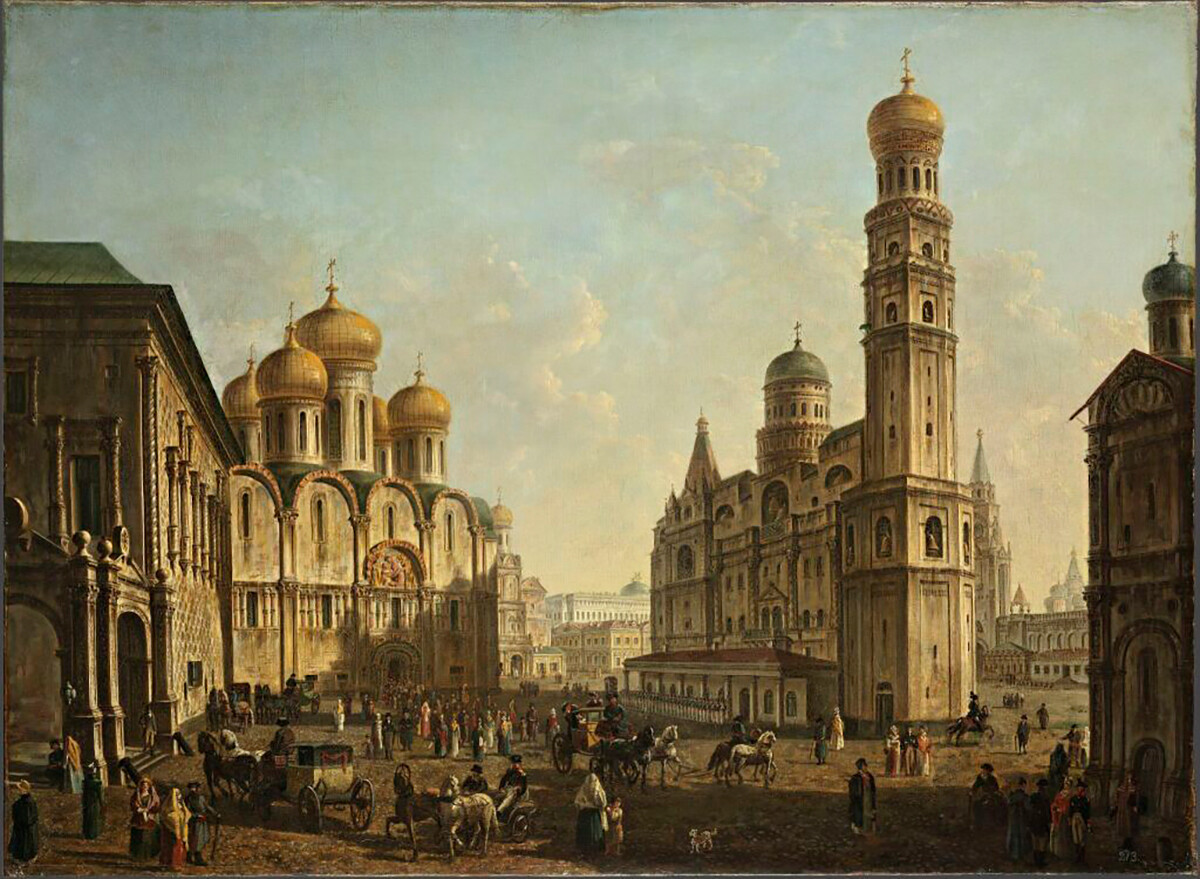
Many paintings that depict churches – or any other type of city for that matter – don’t just have artistic value, but also historical value, possessing a high degree of accuracy.
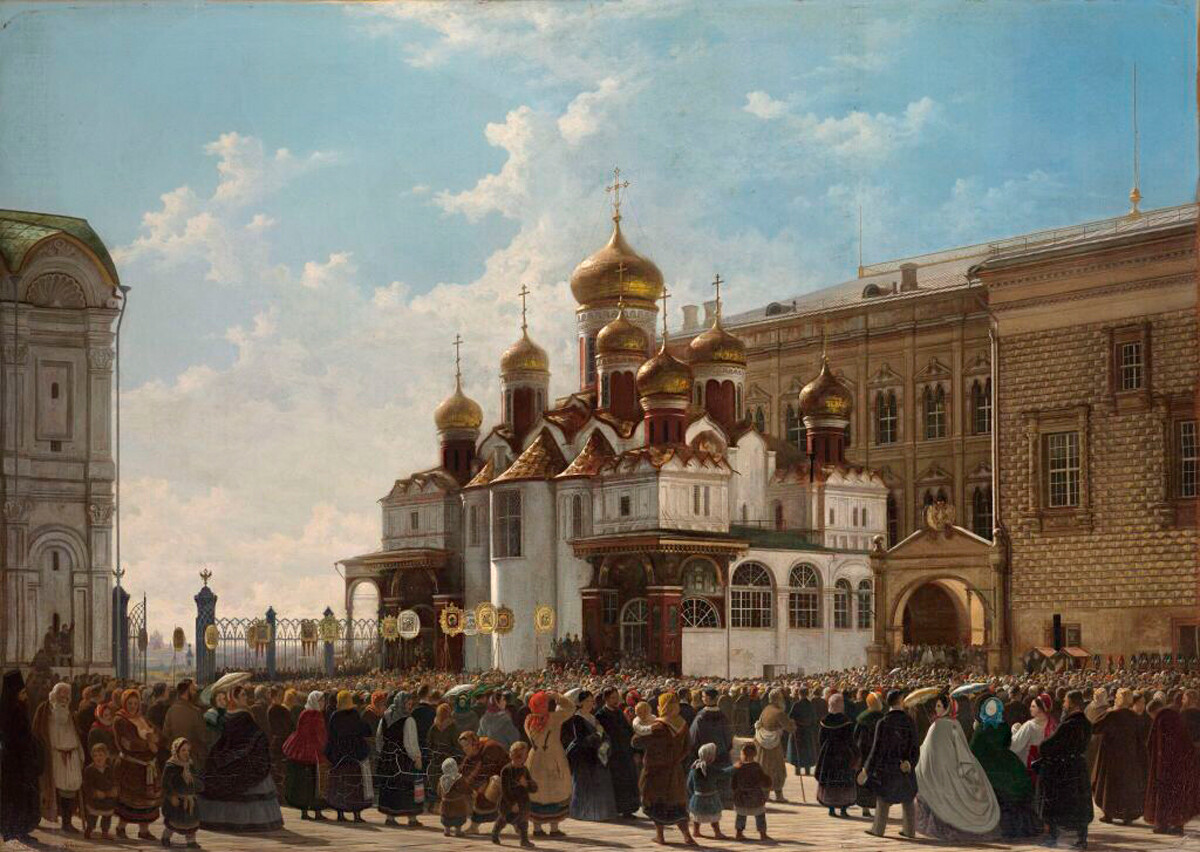
The beautiful old cathedrals of the Moscow Kremlin drew special attention from painters.
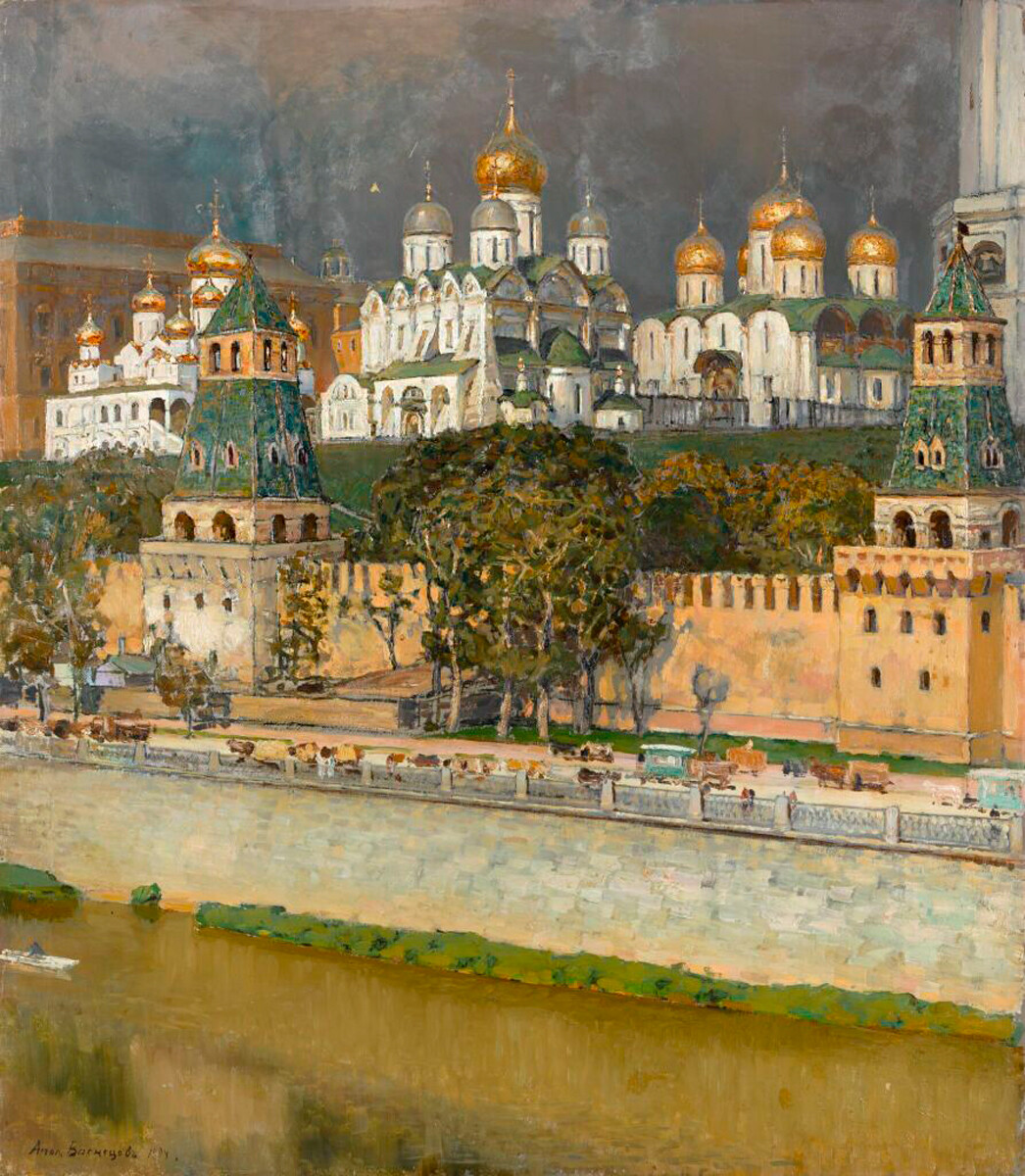
Vasnetsov especially loved to look at Moscow churches, finding a source of inexhaustible inspiration in how sun rays play with patches of light on golden domes.
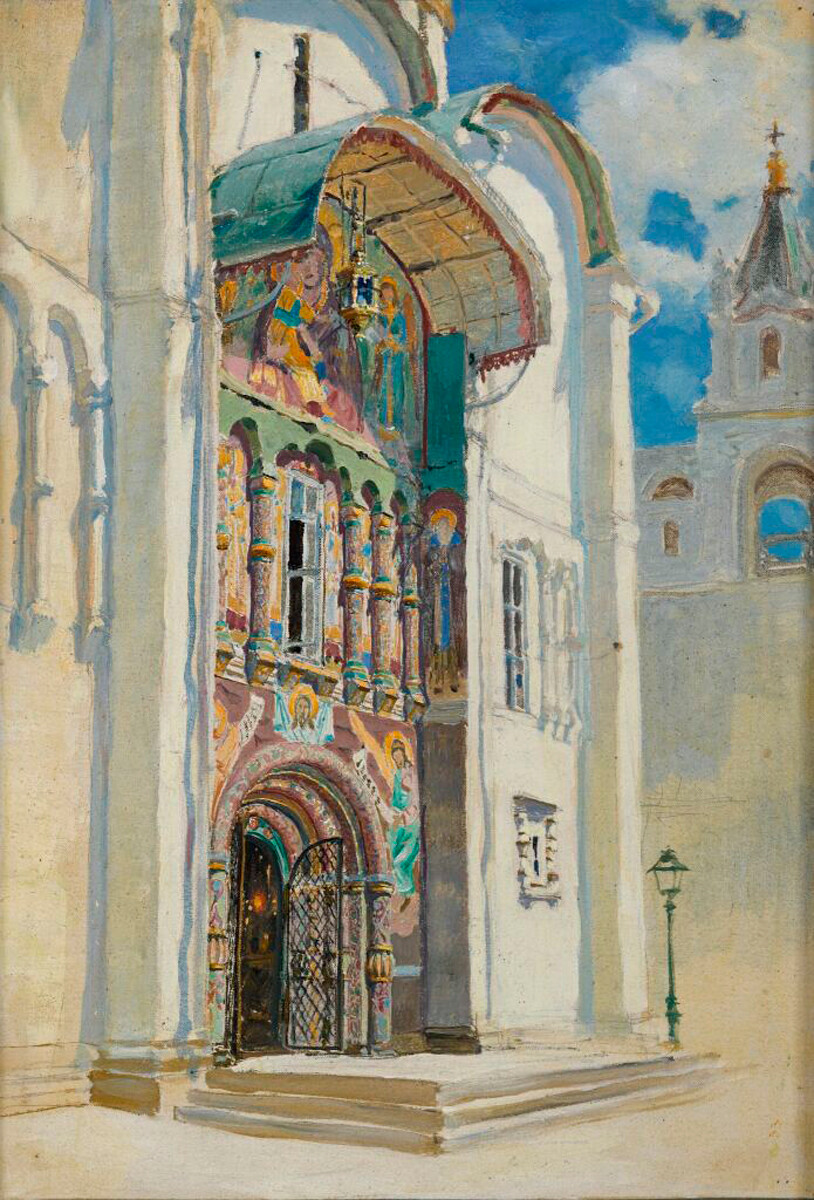
Yet another angle and detail one can adore in the cathedrals of the Moscow Kremlin.
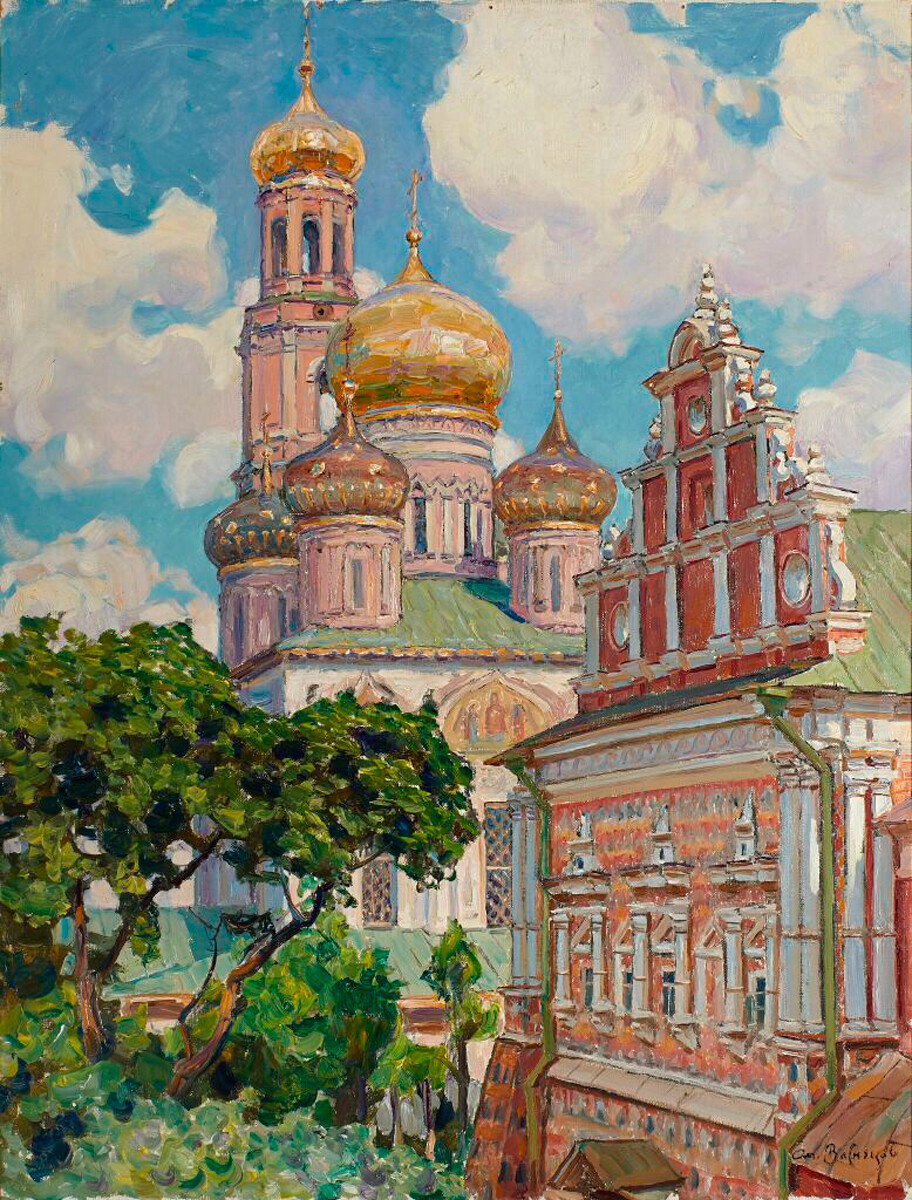
And some of Moscow’s churches, which were unfortunately lost during Soviet times, now only remain in Vasnetsov’s paintings – like, for example, the Simonov Monastery.
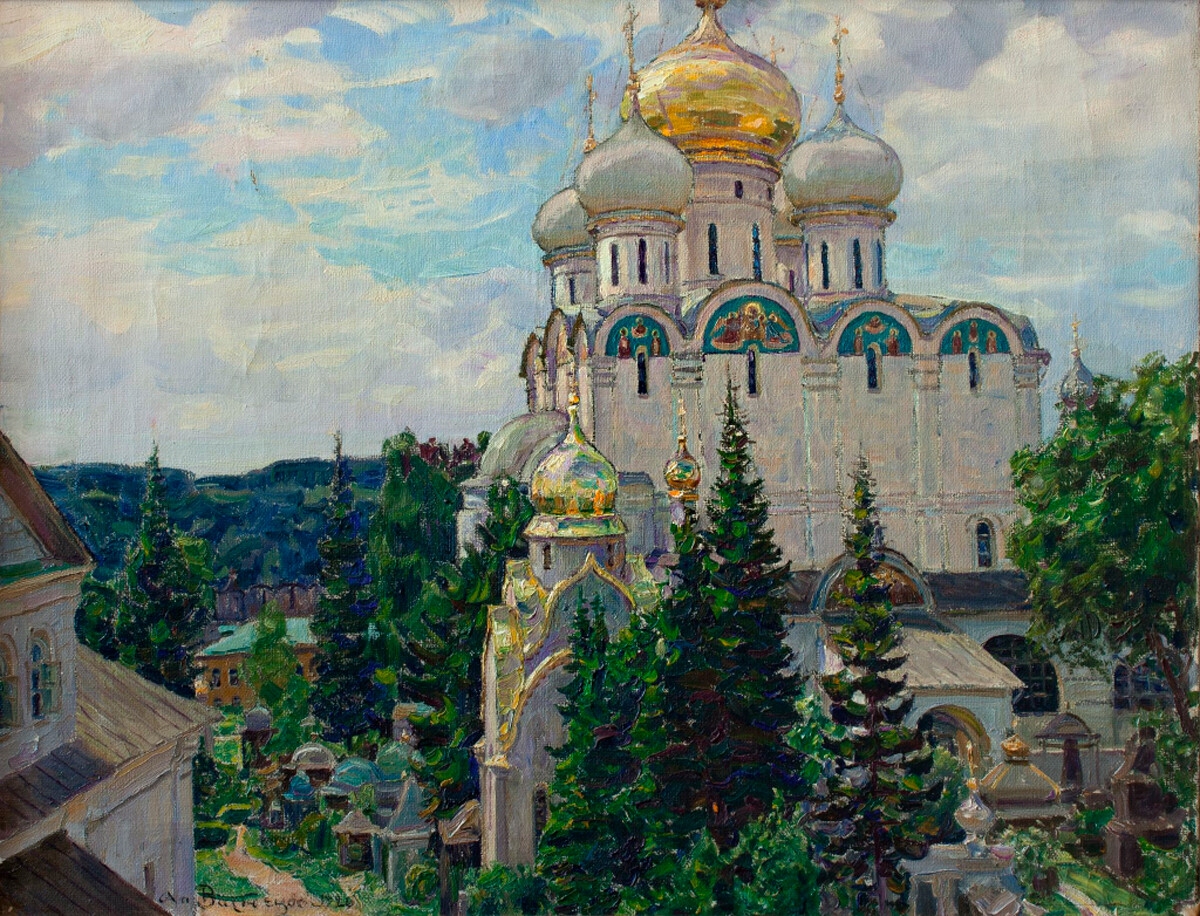
The main cathedral of the most beautiful monastery of Moscow is depicted in this painting. The painting radiates the joy of life. At the beginning of the 20th century, there was a forest around Novodevichy Convent and, now, it’s a central part of Moscow with road overpasses around.
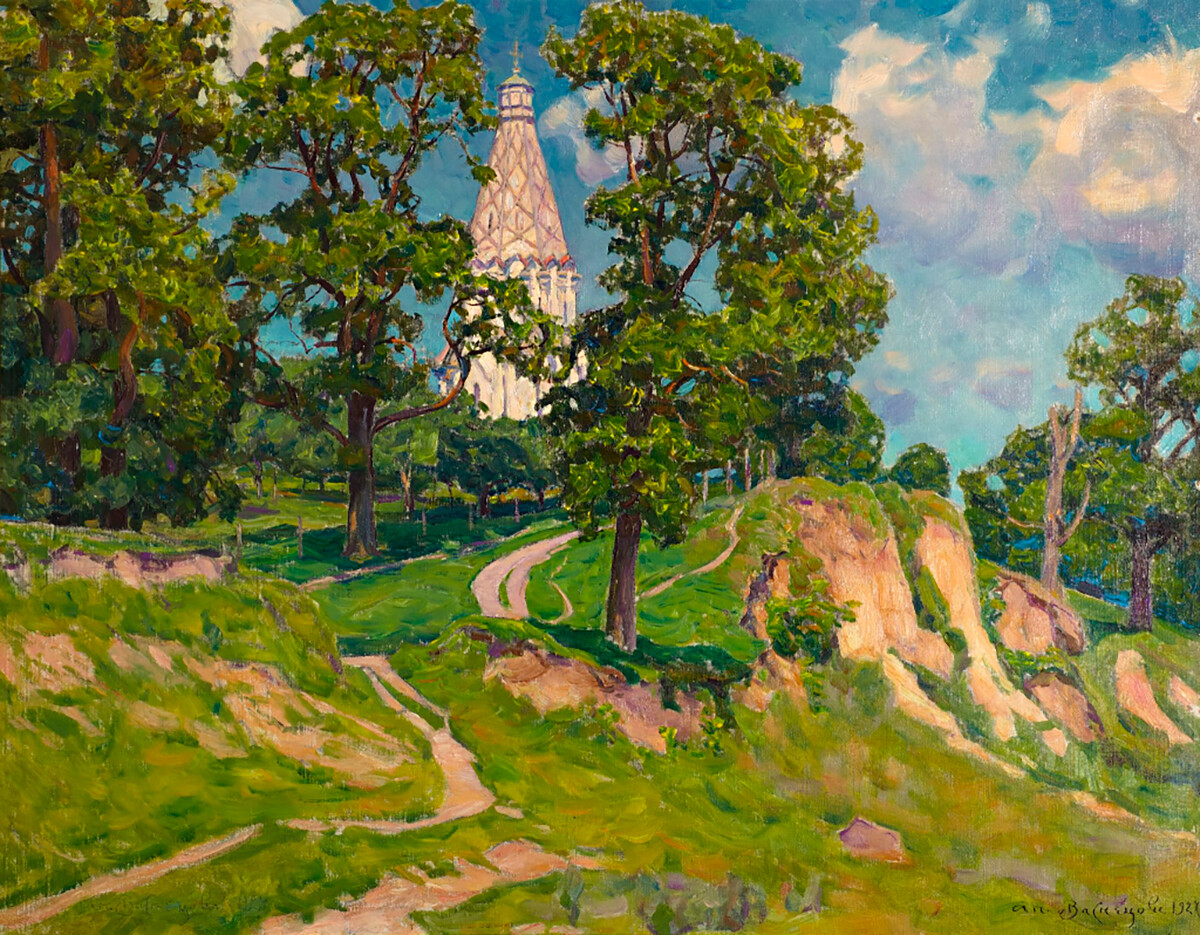
Today, Kolomenskoye is no longer a village, but a museum reserve within the city. This 16th-century church is a true masterpiece of architecture and the first stone steepled-roof church in Russia.
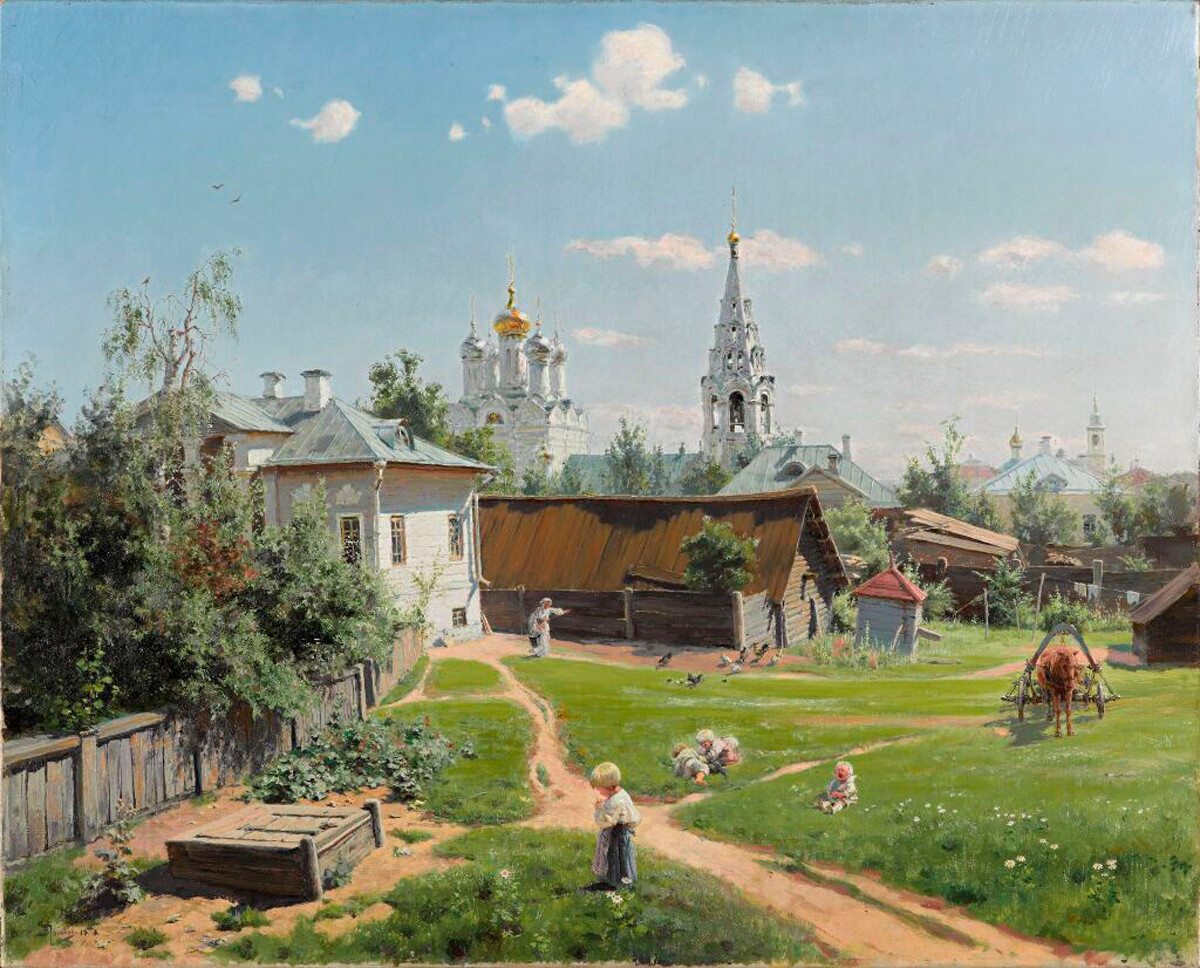
One of the most famous paintings by Polenov captured a yard in the alleys of Arbat Street; in the background - the Church of the Transfiguration on the Sands.
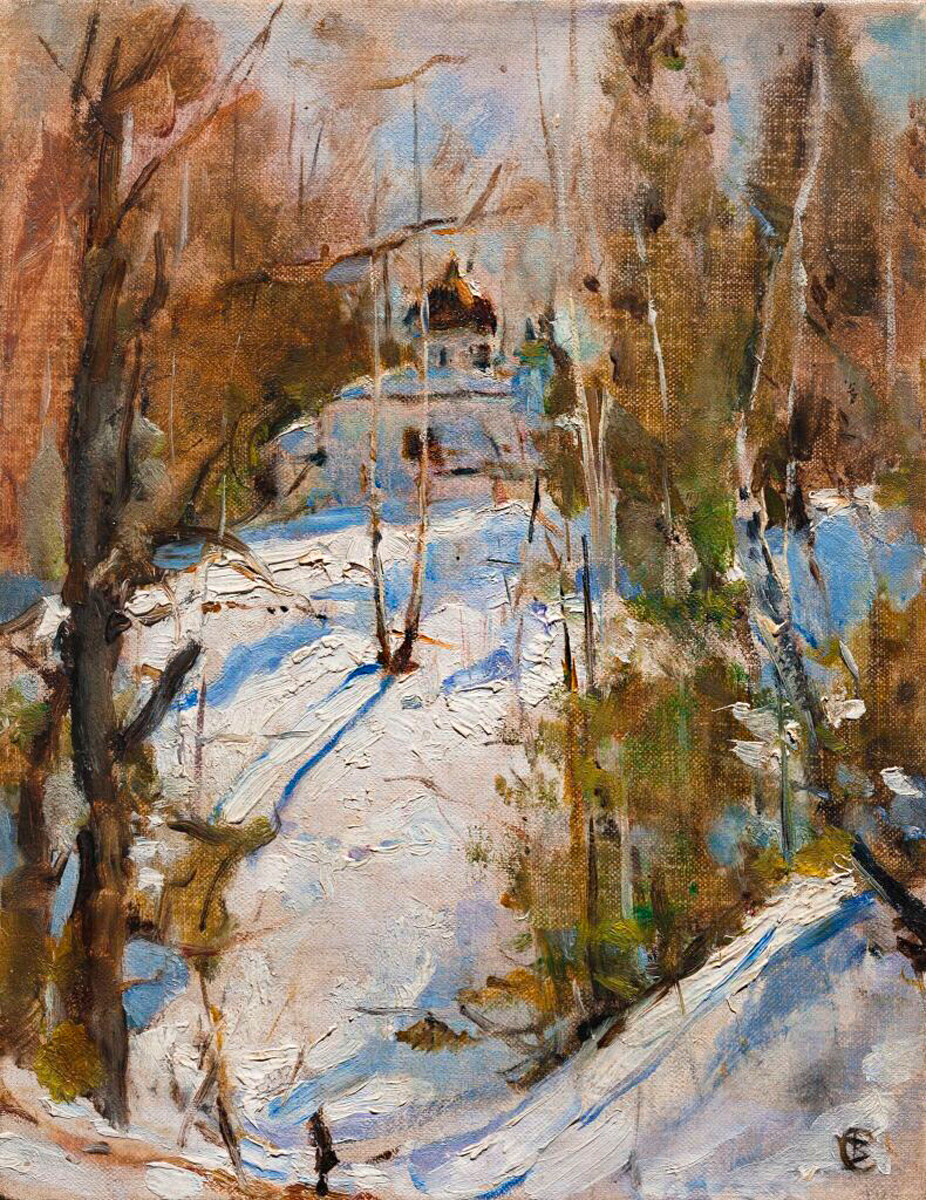
Serov, like many other artists of the end of the 19th century, spent a lot of time in Abramtsevo – patron of art Savva Mamontov’s estate; they worked en plein air. Serov even married his wife in this church, built based on sketches by artist Viktor Vasnetsov.
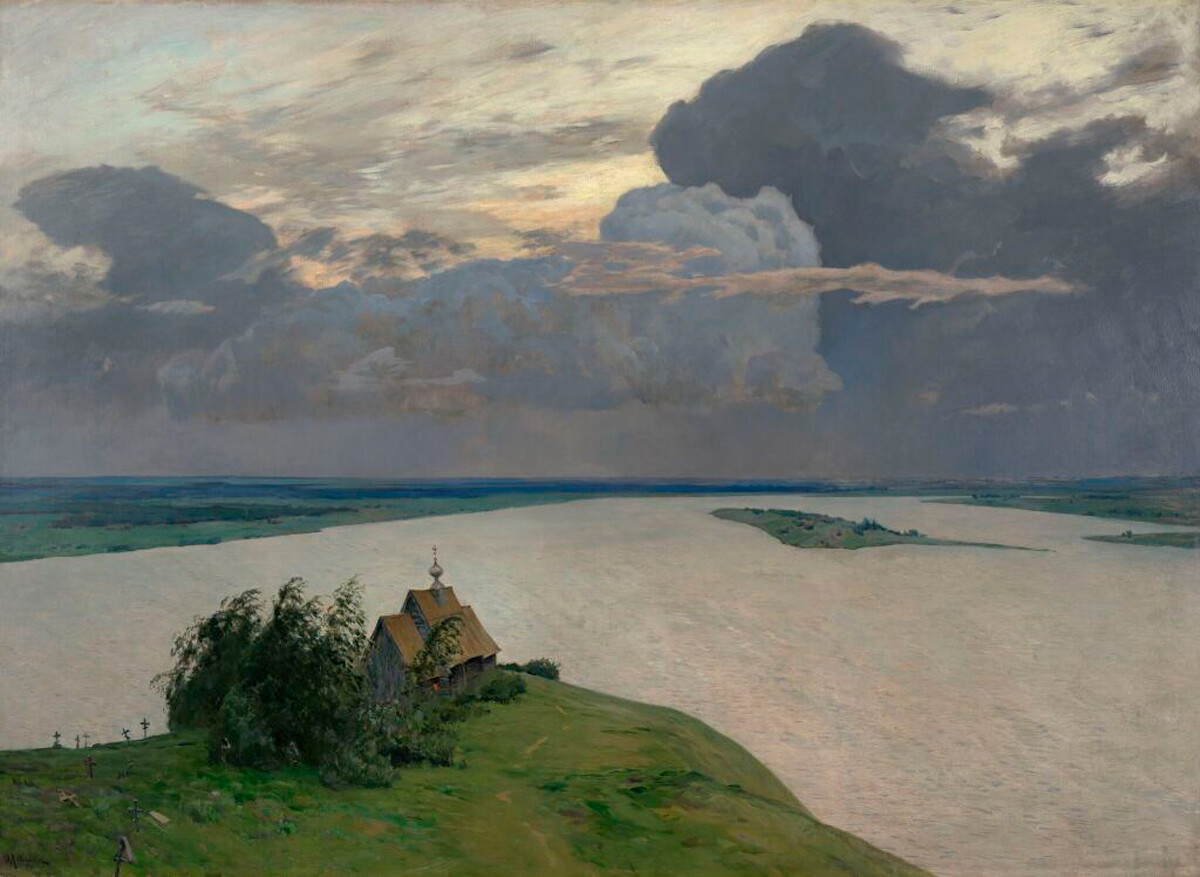
This god-forsaken little church, overgrown with weeds, on the shores of Lake Udomlya near Vyshny Volochyok, gained fame thanks to this monumental (and most famous) painting by Levitan.
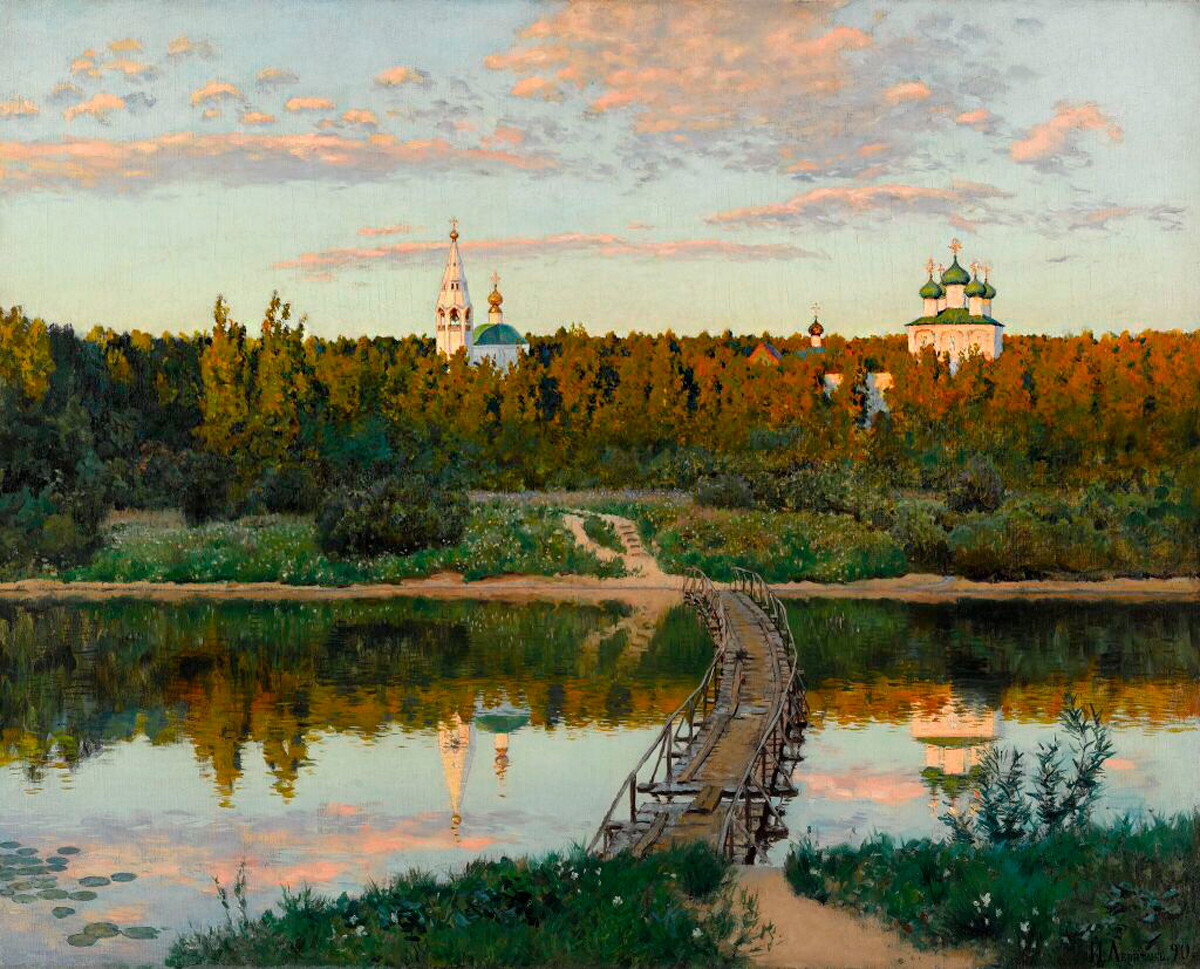
Levitan painted churches and monasteries a lot, they had a calming effect on him. Art historians believe that the footpath and the bridge in the painting seemingly welcome us to an abode of spiritual harmony.
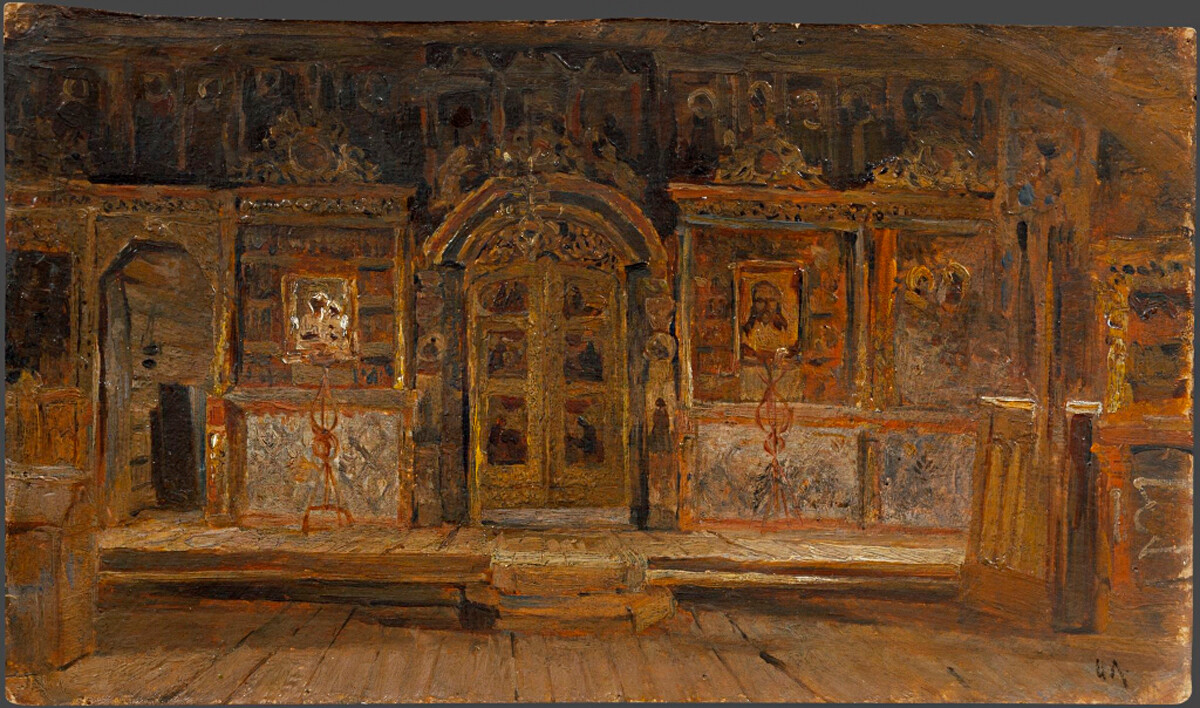
Levitan worked a lot in the picturesque town of Plyos; depictions of many local churches came from under his brush. And he even depicted this wooden church (now lost) from the inside.
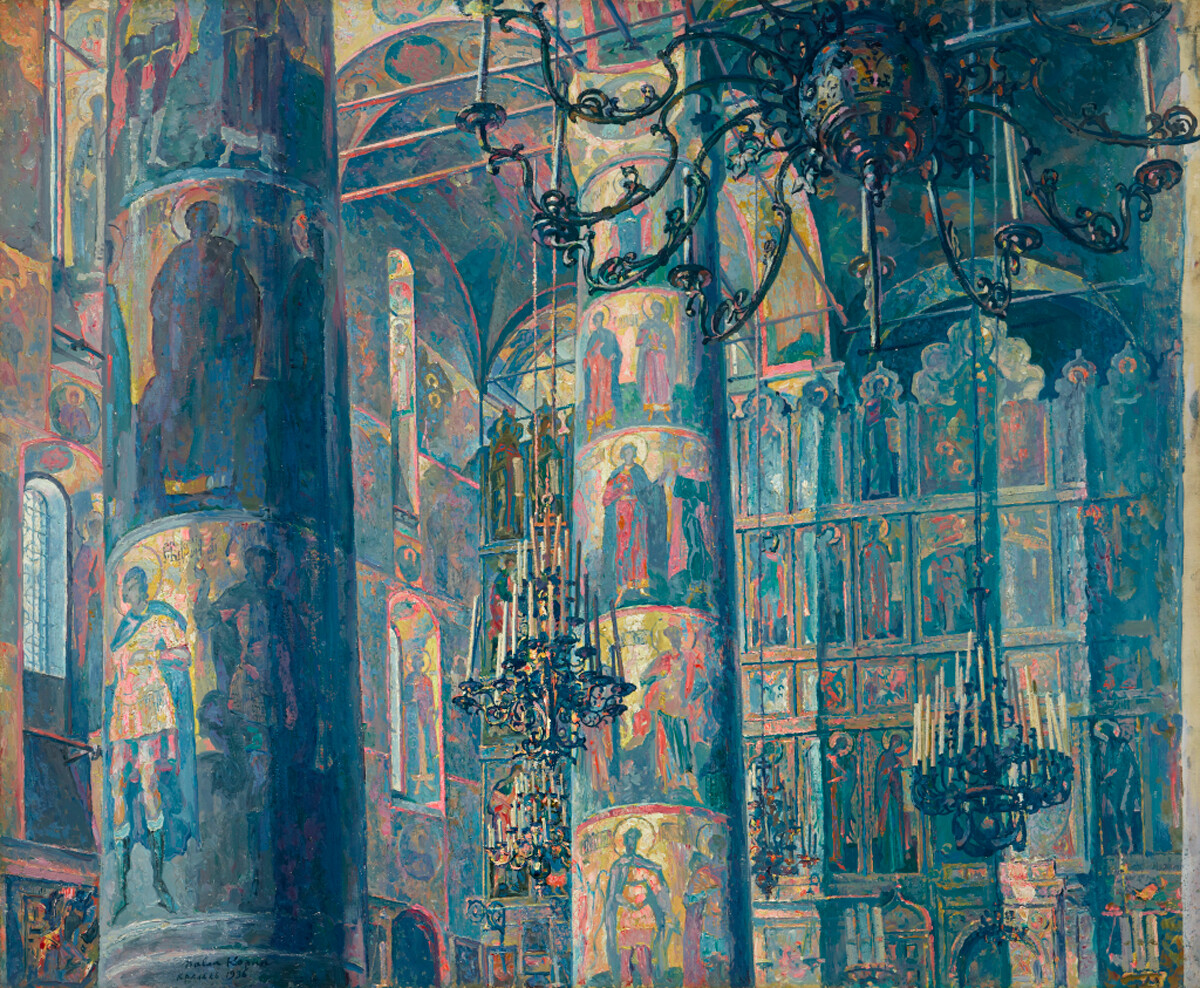
The interior decoration of churches didn’t appear in paintings as often as their exterior. And, thus, the more precious are such paintings.
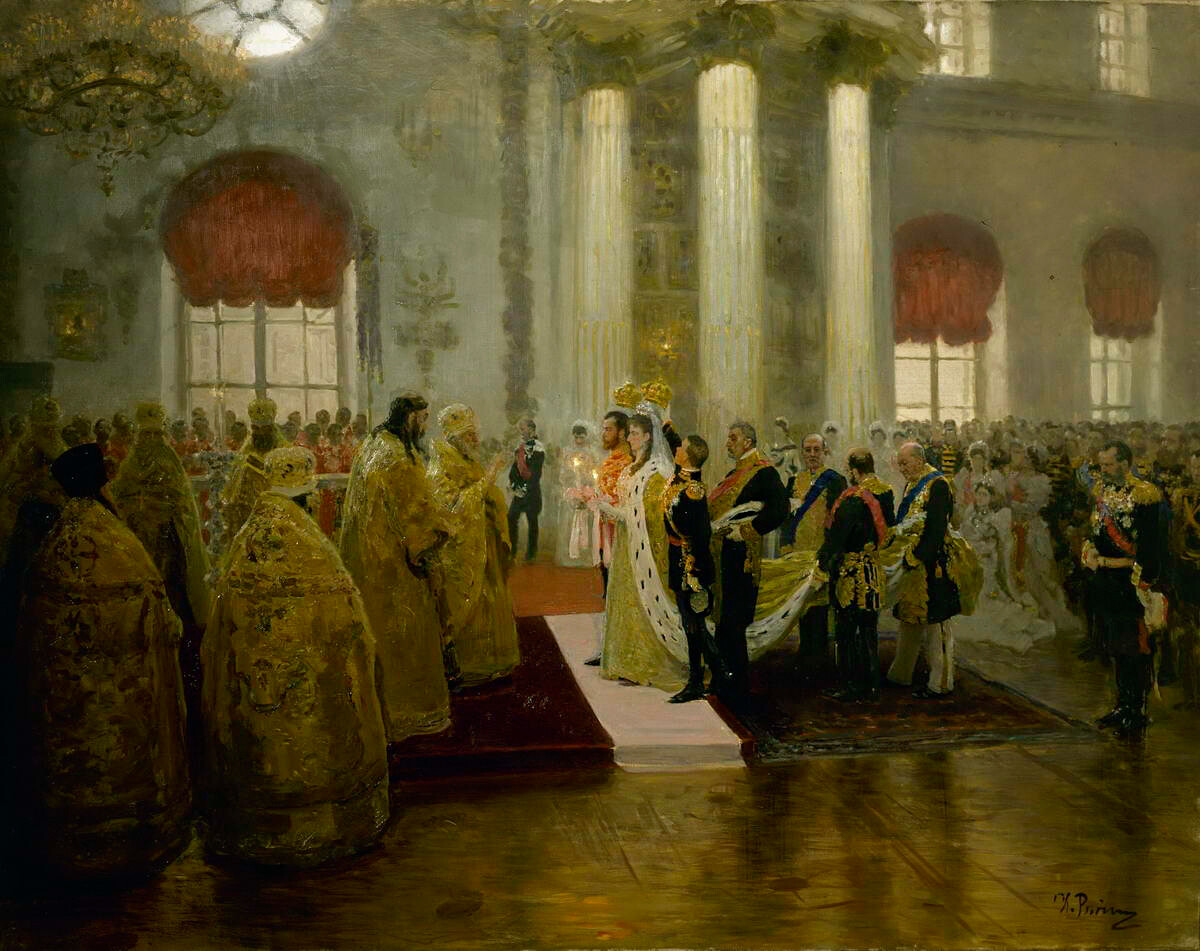
Court artist Repin went further and depicted the most important sacrament – the wedding of the last Russian tsar, Nicholas II, in the Winter Palace church in St. Petersburg.
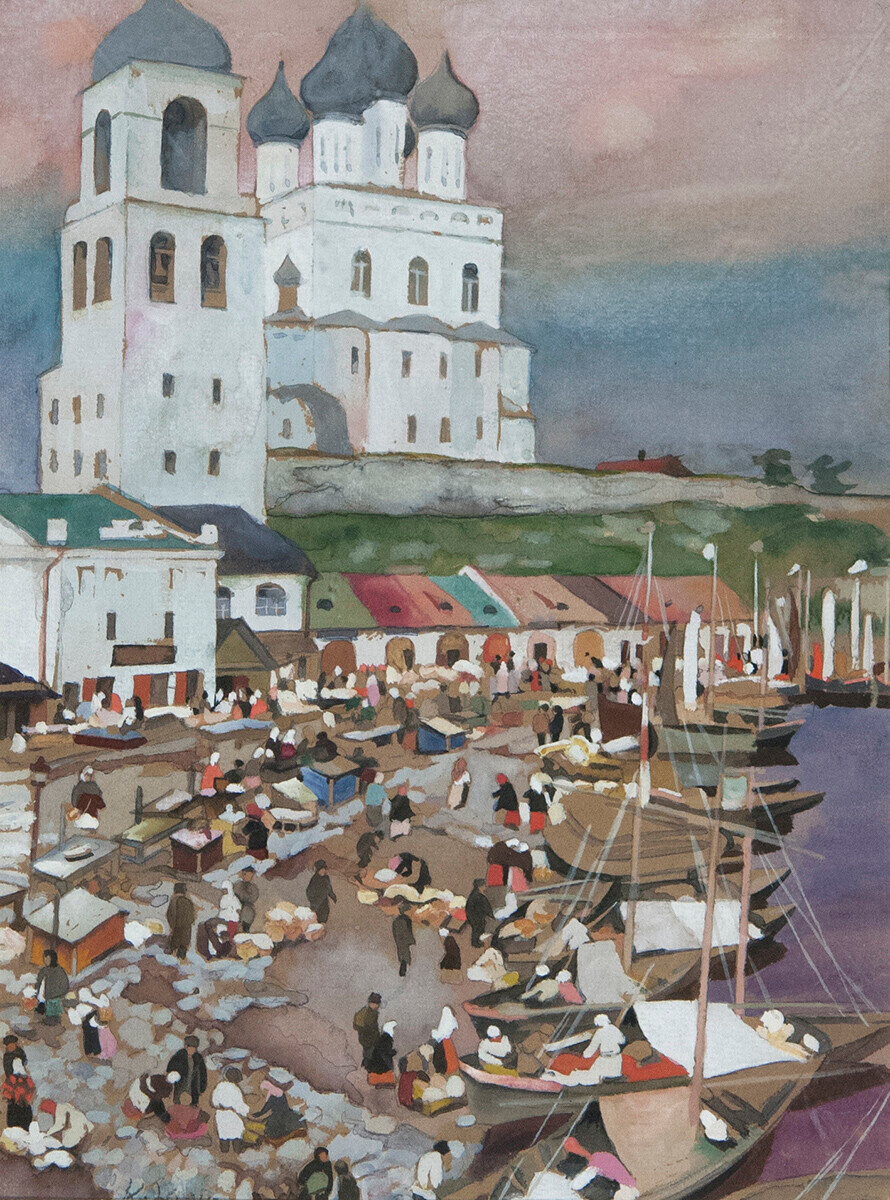
A frequent attribute of the views of Pskov is its ancient churches, currently listed as UNESCO World Heritage Sites. Including, for example, this grand Trinity Cathedral of the Pskov Kremlin.
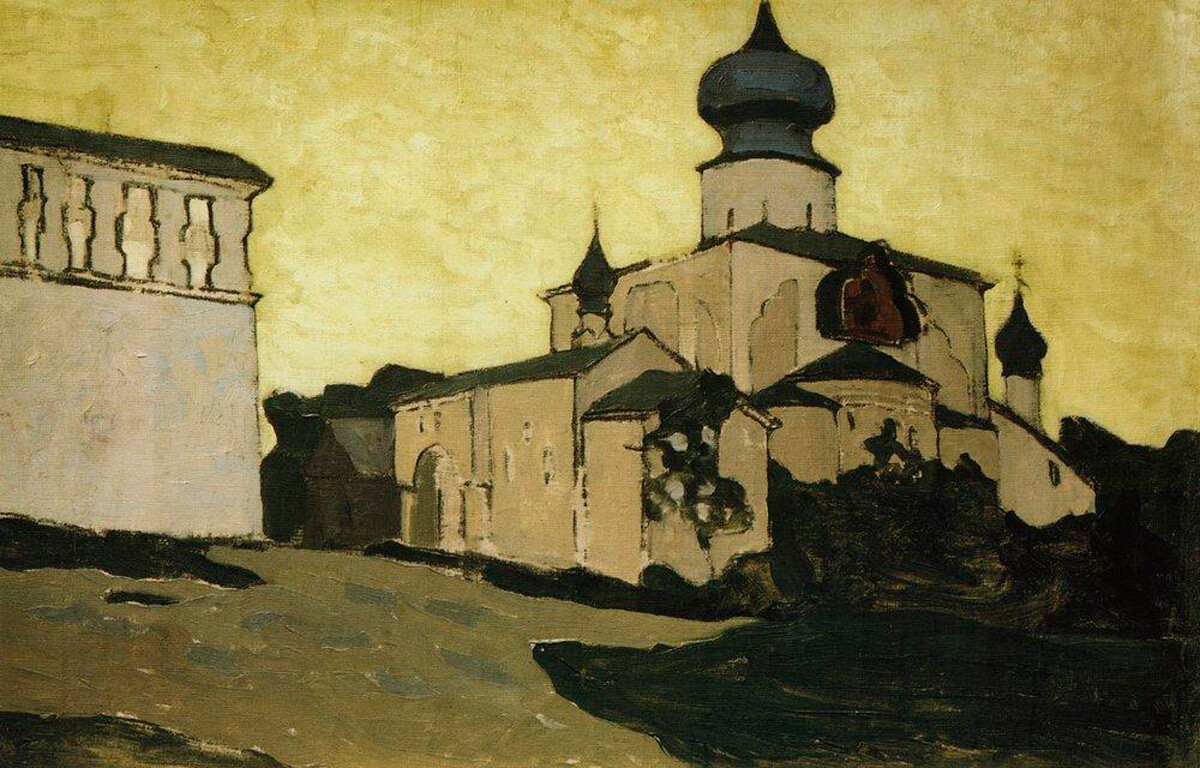
Known for his Himalayan landscapes, Roerich created many paintings with biblical subjects – and traveled across ancient cities of Russia, painting old churches.
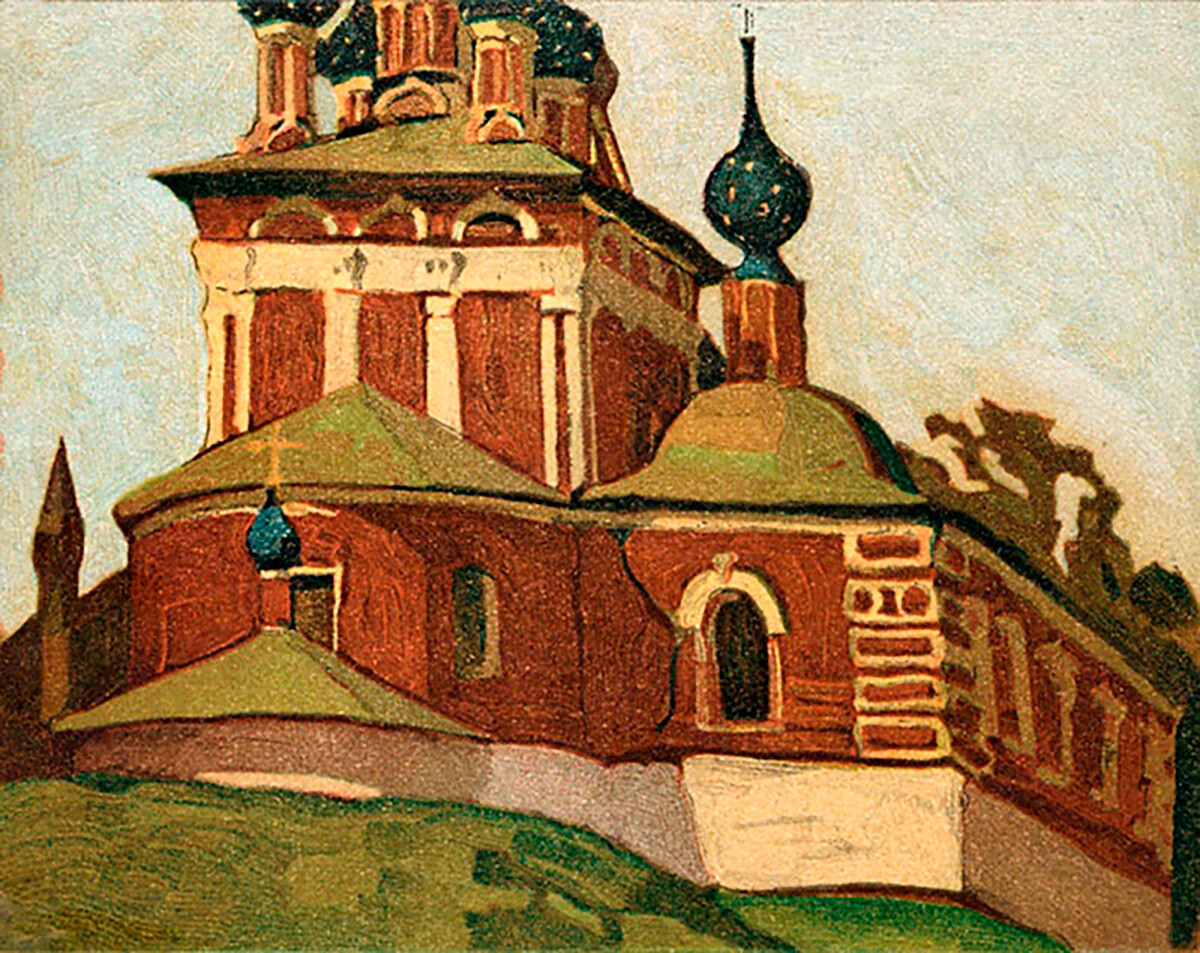
Roerich concerned himself greatly with the preservation of ancient monuments of architecture; depicting them in his paintings was yet another way to preserve them for future generations.
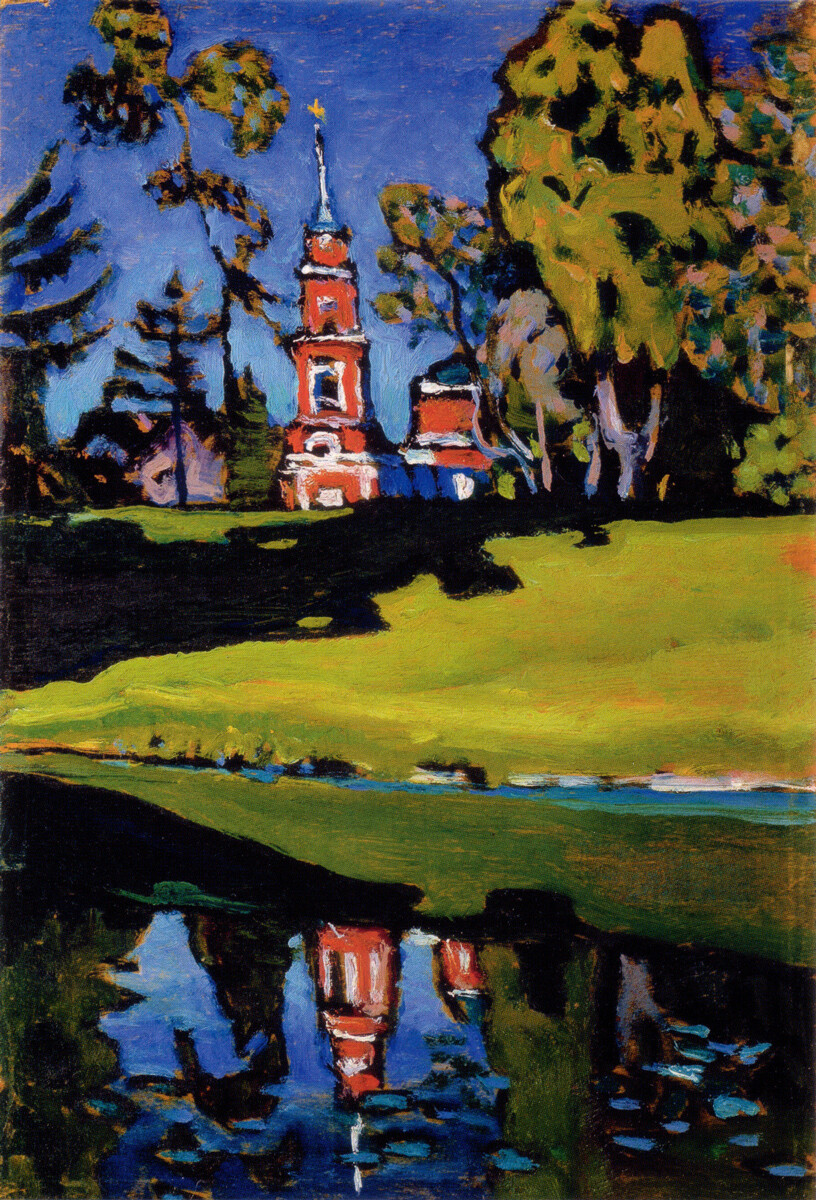
Before becoming a master of abstract art, Kandinsky created quite rich landscapes.
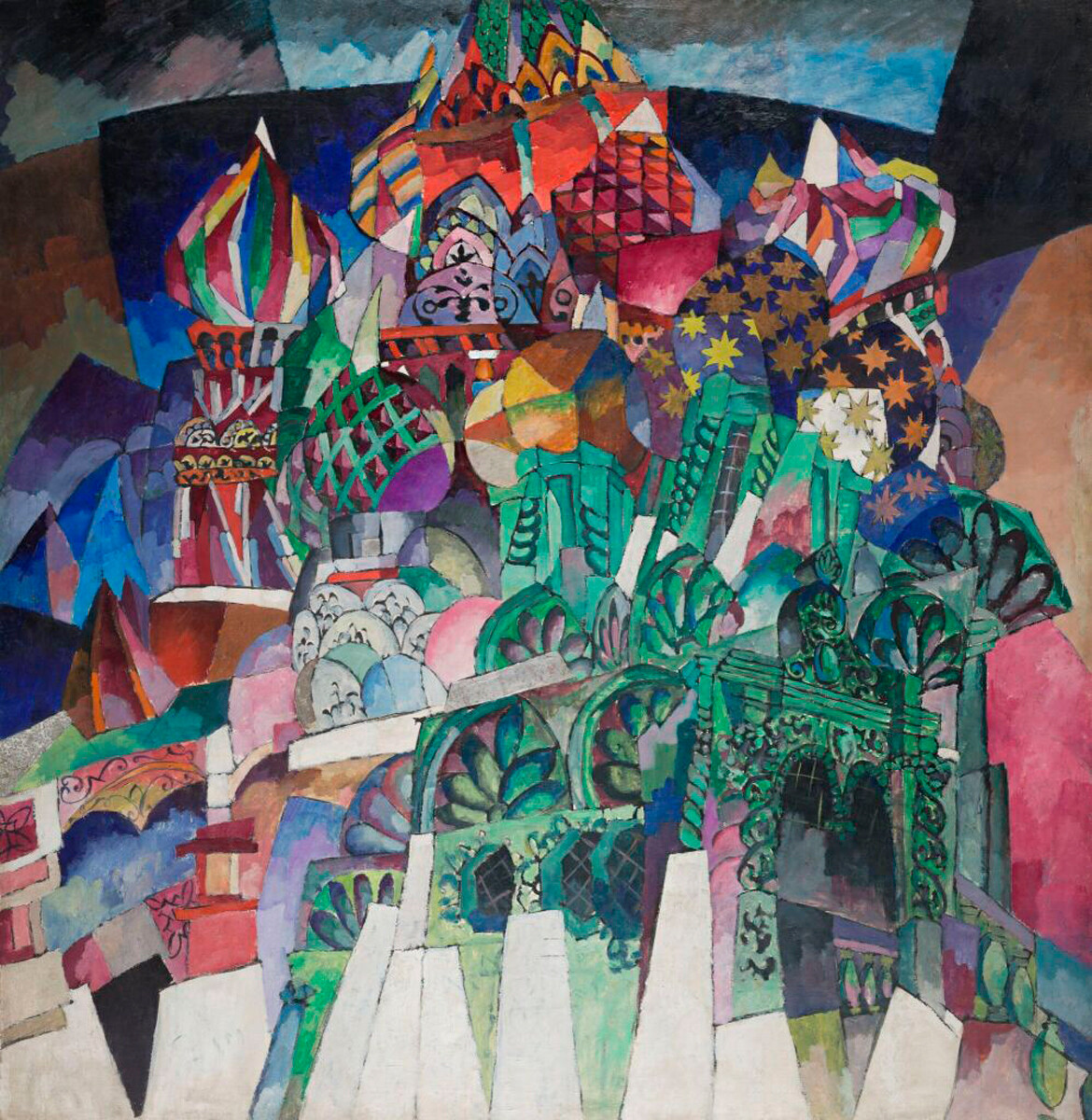
One can easily spot the features of the most famous Moscow cathedral in this avant-garde fantasy.
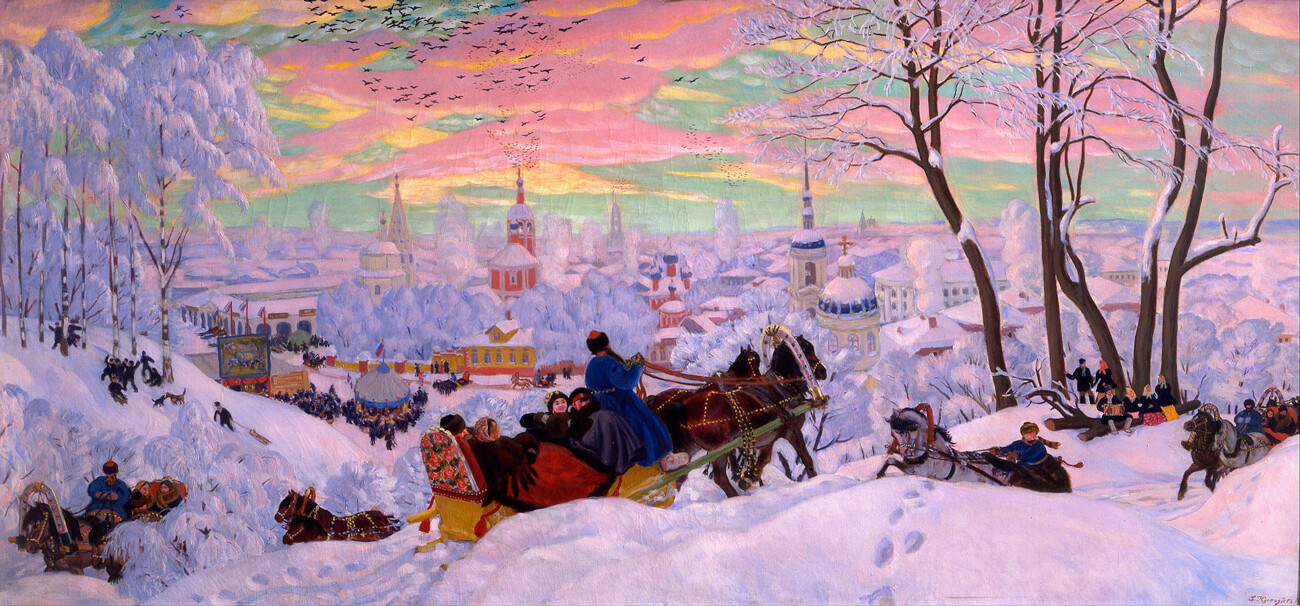
Depicting churches in a toy-like way is an important element of Kustodiev’s creative work and a feature of the merchant life he was showing.
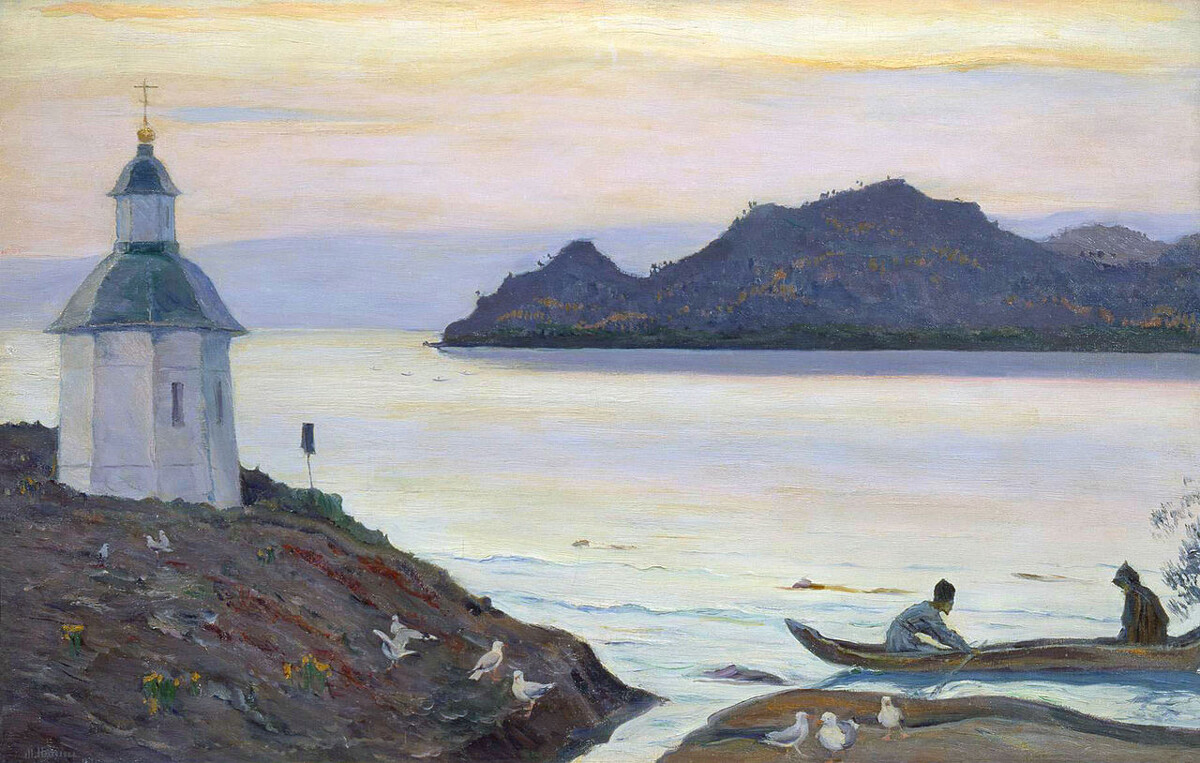
Mikhail Nesterov created a large amount of religion-themed paintings. He even traveled to the remote Solovetsky Monastery in the White Sea.
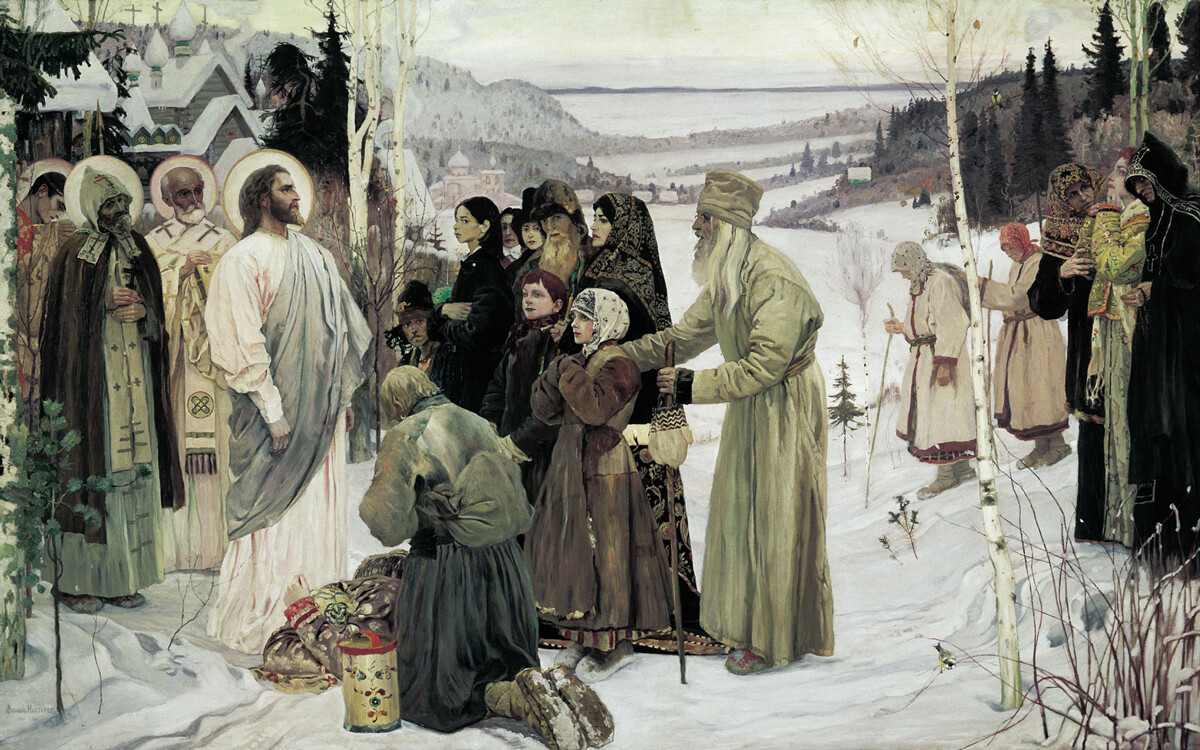
Nesterov embodied his spiritual search in this monumental painting, which has become a literal illustration of the phrase: “We’re Russians, God is with us.”
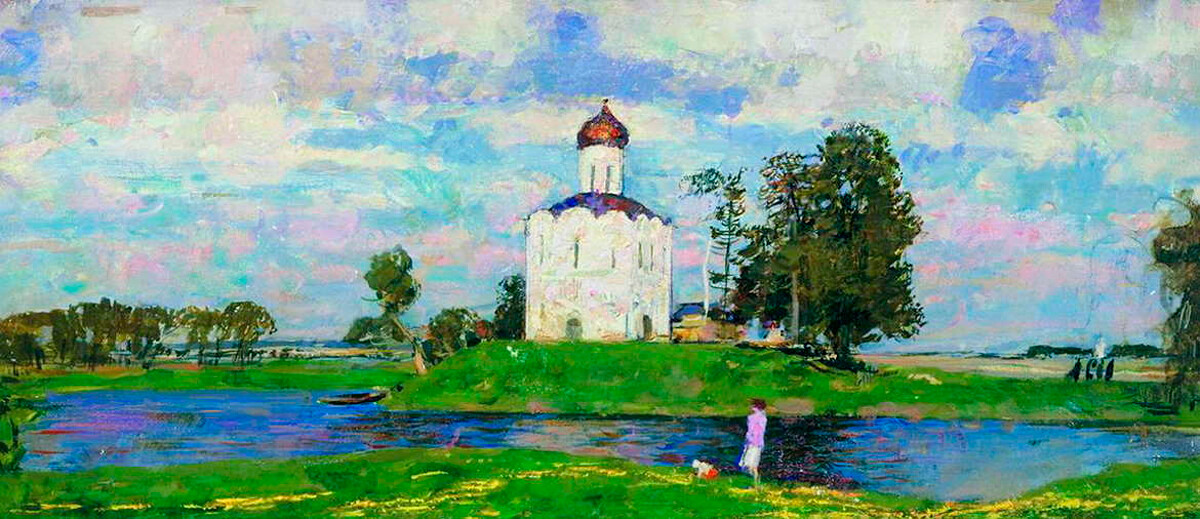
One of the most beautiful and ancient churches of Russia is a 12th-century church not far from the city of Vladimir. Even court Soviet painter and master of social realism Sergei Gerasimov couldn’t pass it by.
Dear readers,
Our website and social media accounts are under threat of being restricted or banned, due to the current circumstances. So, to keep up with our latest content, simply do the following:
If using any of Russia Beyond's content, partly or in full, always provide an active hyperlink to the original material.
Subscribe
to our newsletter!
Get the week's best stories straight to your inbox